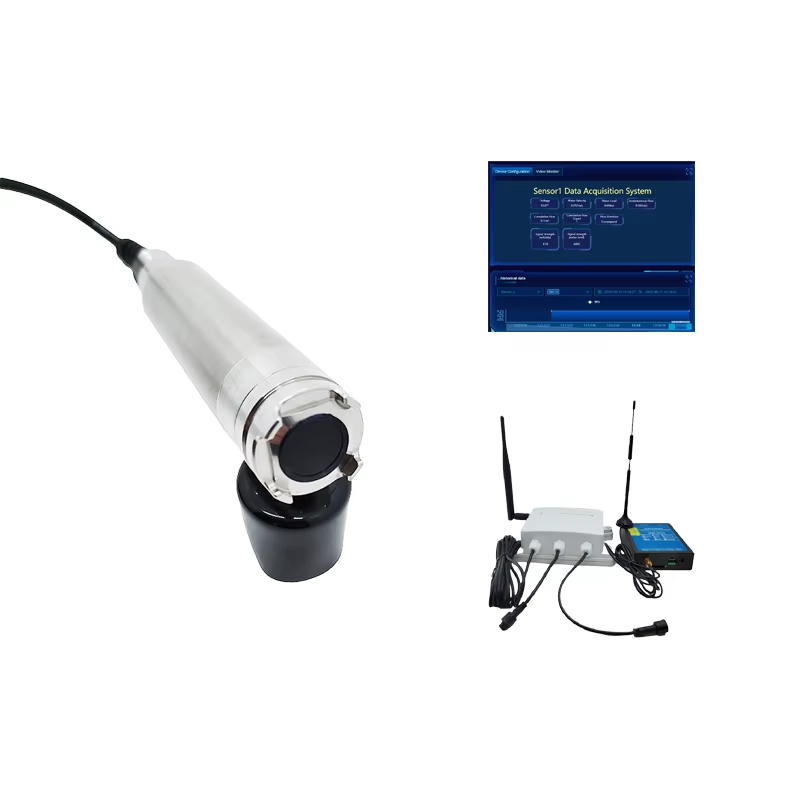Optical dissolved oxygen sensors are advanced water quality monitoring tools that operate based on fluorescence measurement technology, enabling efficient and accurate assessment of dissolved oxygen levels in water. The application of this technology is gradually transforming the landscape of environmental monitoring, impacting several key areas:
1. Improved Accuracy and Sensitivity
Optical dissolved oxygen sensors offer higher precision and sensitivity compared to traditional electrochemical sensors. By measuring changes in fluorescence signals, optical sensors can detect oxygen levels even at very low concentrations. This allows for the monitoring of subtle shifts in water quality, which is crucial for assessing the ecological health of water bodies.
2. Reduced Maintenance Frequency
Optical dissolved oxygen sensors require less frequent maintenance compared to their electrochemical counterparts. They use stable membrane materials that are less susceptible to contamination, significantly reducing maintenance costs. This makes them more suitable for long-term monitoring projects, minimizing data loss due to equipment failure.
3. Real-Time Data Acquisition and Remote Monitoring
Modern optical dissolved oxygen sensors typically support real-time data collection and can transmit data via wireless networks for remote monitoring. This capability enables environmental monitoring personnel to access water quality data at any time, allowing for the timely detection of pollution events or ecological changes and providing critical information for decision-making.
4. Integration and Multi-Parameter Monitoring
Optical dissolved oxygen sensors can be integrated with other water quality parameter sensors, forming a multi-parameter monitoring platform. This integrated solution can simultaneously monitor temperature, pH, turbidity, and other indicators, providing a more comprehensive assessment of water quality and assisting environmental protection efforts.
5. Promoting Sustainable Development and Ecological Restoration
By supplying accurate water quality data, optical dissolved oxygen sensors facilitate various ecological restoration projects and water resource management strategies. Governments and environmental organizations can utilize this data to develop more effective policies and measures, enhancing the resilience of aquatic ecosystems and promoting sustainable development.
6. Expansion of Application Areas
The application of optical dissolved oxygen sensors extends beyond the monitoring of lakes, rivers, and oceans to include agricultural irrigation, industrial wastewater treatment, and aquaculture. Their versatility in various scenarios makes them an essential tool in the field of water quality monitoring.
Additional Solutions Offered
We can also provide a variety of solutions for:
- Handheld meters for multi-parameter water quality
- Floating buoy systems for multi-parameter water quality
- Automatic cleaning brushes for multi-parameter water sensors
- Complete sets of servers and software wireless modules, supporting RS485, GPRS/4G, WiFi, LORA, and LoRaWAN.

Conclusion
The application of optical dissolved oxygen sensors in environmental monitoring showcases significant potential, aligning technological advancements with the need for sustainable development. This not only enhances the efficiency and accuracy of water quality monitoring but also offers critical support for global water resource management. As technology continues to evolve, optical dissolved oxygen sensors will play an increasingly vital role in the future of environmental monitoring.
For more water quality sensor information, please contact Honde Technology Co., LTD.
Email: info@hondetech.com
Company Website: www.hondetechco.com
Tel: +86-15210548582
Post time: May-16-2025

